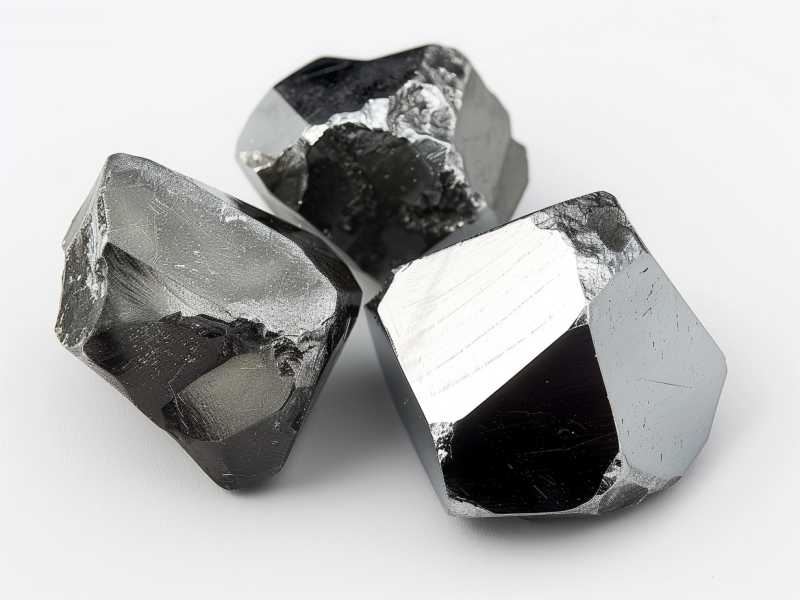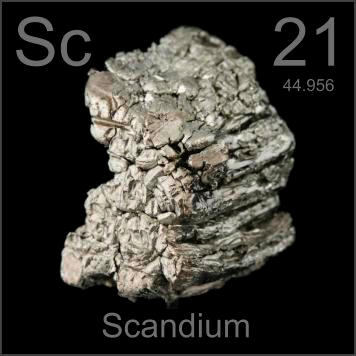
Introduction
Scandium and magnesium are two metals that, despite being from different groups on the periodic table, share several similarities and have unique properties that make them valuable in various applications. This article explores the similarities and differences between scandium and magnesium, delving into their properties, applications, and significance in modern technology and industry.
Basic Properties
Scandium
- Symbol: Sc
- Atomic Number: 21
- Density: 2.985 g/cm³
- Melting Point: 1541°C
- Appearance: Silvery-white metal

Magnesium
- Symbol: Mg
- Atomic Number: 12
- Density: 1.738 g/cm³
- Melting Point: 650°C
- Appearance: Silvery-white metal
Both scandium and magnesium are lightweight, silvery-white metals. However, magnesium is significantly lighter and has a lower melting point than scandium, influencing their respective applications in industries where weight and thermal properties are crucial.
Chemical Behavior
Similarities
- Oxidation States: Both scandium and magnesium commonly exhibit a +2 oxidation state (though scandium primarily exhibits a +3 oxidation state).
- Reactivity: Both metals react with oxygen to form oxides—scandium oxide (Sc₂O₃) and magnesium oxide (MgO)—which provide protective coatings against further oxidation.
- Alloy Formation: Both scandium and magnesium are used to form alloys that enhance the properties of other metals, such as aluminum.
Differences
- Chemical Stability: Scandium compounds tend to be more stable at high temperatures compared to magnesium compounds.
- Reactivity: Magnesium is more reactive than scandium, particularly with acids, releasing hydrogen gas.
Applications
Scandium
- Aerospace: Scandium is used in aluminum-scandium alloys to produce lightweight, strong components for aerospace applications.
- Sports Equipment: High-performance sports equipment, such as bicycle frames and baseball bats, often incorporates scandium for enhanced strength and durability.
- Lighting: Scandium is used in metal halide lamps, providing high-intensity light with excellent color rendering properties.
- Solid Oxide Fuel Cells (SOFCs): Scandium is used to improve the conductivity and performance of electrolyte materials in SOFCs.
Magnesium
- Automotive Industry: Magnesium is used in the production of lightweight, strong components for vehicles, improving fuel efficiency and performance.
- Aerospace: Magnesium alloys are used in the aerospace industry for components that need to be lightweight and strong.
- Electronics: Magnesium is used in the casings of electronic devices, such as laptops and cameras, due to its light weight and strength.
- Medical Devices: Magnesium is used in biomedical implants, such as bone screws and plates, due to its biocompatibility and biodegradability.
While both metals are used to create lightweight, strong alloys, scandium’s applications are more specialized and high-performance-focused, whereas magnesium is more widely used across various industries.
Alloying
Scandium Alloys
Scandium’s primary application is in enhancing aluminum alloys, creating materials with superior strength, weldability, and corrosion resistance. These alloys are particularly valuable in the aerospace and sports equipment industries, where weight reduction and durability are crucial.
Magnesium Alloys
Magnesium is alloyed with other metals, such as aluminum and zinc, to create lightweight, strong materials used in automotive and aerospace applications. Magnesium alloys are valued for their ability to reduce the weight of components without sacrificing strength.
Economic and Industrial Relevance
Scandium
Scandium is a rare element with limited primary production sources. It is often obtained as a by-product of other mining operations, making it relatively expensive. Its high cost limits its widespread use, but its ability to significantly enhance aluminum alloys creates a niche market with strong demand in aerospace and high-performance applications.
Magnesium
Magnesium is more abundant and has a well-established supply chain. It is extracted primarily from seawater and minerals like dolomite. Magnesium’s broad range of applications, from automotive to electronics, makes it a critical material with significant economic importance.
Environmental and Biological Aspects
Environmental Impact
Both scandium and magnesium have relatively low environmental impacts when used properly. However, their extraction and processing can pose environmental challenges, requiring careful management to minimize adverse effects. Recycling and sustainable mining practices are essential to mitigate their environmental footprint.
Biological Roles
Magnesium plays a vital role in biological systems, being an essential nutrient for human health. It is involved in numerous biochemical reactions in the body, including energy production and muscle function. Scandium, on the other hand, does not play a significant biological role and is generally considered non-toxic but should be handled with care to avoid potential health risks from prolonged exposure.
Conclusion
Scandium and magnesium, while sharing several similarities in their lightweight and silvery-white appearance, exhibit distinct properties and applications that make them valuable in different ways. Scandium’s role in enhancing aluminum alloys and its use in high-performance lighting highlight its niche but crucial contributions to modern technology. In contrast, magnesium’s versatility in automotive, aerospace, electronics, and medical applications underscores its broader industrial significance.
Understanding the similarities and differences between these two elements allows for better utilization in specialized applications, driving innovation and enhancing material performance. For more information on scandium and its applications, explore our comprehensive resources and product offerings on our website. Discover how scandium can elevate your projects and meet your specific needs in the ever-evolving world of materials science.
